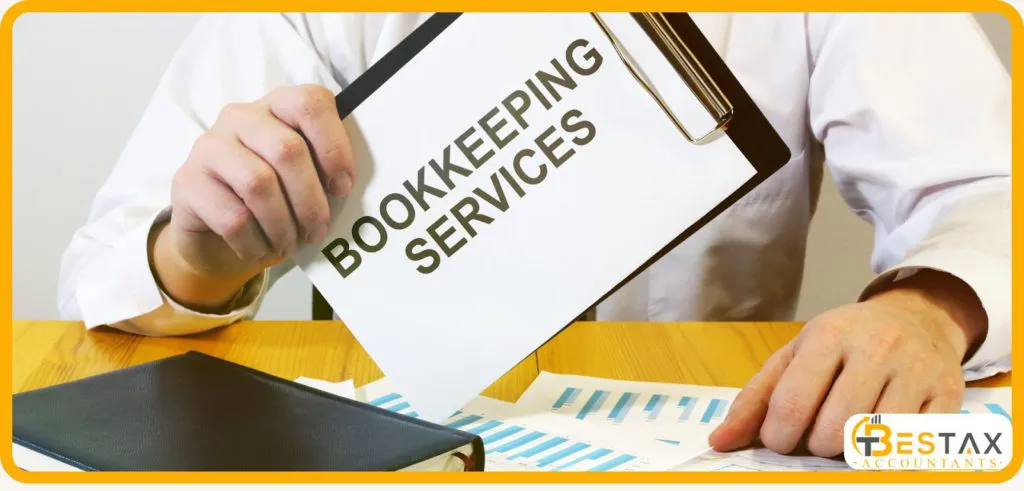In Canada, small businesses form the backbone of the economy, accounting for 97.9% of all businesses. Effective bookkeeping is essential for these enterprises, ensuring accurate financial records, compliance with tax regulations, and informed decision-making.
Despite its importance, many small business owners face challenges in managing their finances. A survey revealed that nearly half of Canadian small business owners encounter fiscal difficulties due to limited financial literacy. This gap highlights the need for easy-to-access and efficient bookkeeping solutions.
Quick Bookkeeping Checklist for Canadian Small Business Owners
- Choose a bookkeeping method (single-entry or double-entry)
- Pick reliable bookkeeping software
- Record all income and expenses
- Reconcile bank statements monthly
- Save and organize all receipts
- Track and pay GST/HST on time
- Generate regular financial reports
- Set a monthly bookkeeping routine
- Consider online bookkeeping services
- Plan for future business growth
What is Bookkeeping?

Bookkeeping for small businesses is all about keeping track of money coming in and going out. In Canada, small businesses follow certain accounting standards. These are set by the Accounting Standards Board.
There are two main types:
- International Financial Reporting Standards (IFRS)
- Accounting Standards for Private Enterprises (ASPE)
These rules help businesses stay consistent and organized.
Best Practices in Bookkeeping
Good bookkeeping starts with a few simple habits. First, every number must be right. Always double-check the amounts. Don’t guess.
Next, put each cost in the right place. For example, product-making costs should go under “cost of goods sold,” not general expenses.
Also, record everything on time. Don’t wait too long, or you might forget details. Use the same method every time. This helps avoid confusion later.
Keep the system simple. One entry per transaction is enough. Too many steps just make things harder.
Let’s move on to why these steps matter.
Why Basic Bookkeeping Matters
Small business bookkeeping helps owners understand their money. It shows how much is being spent and earned. This makes it easier to make smart decisions.
It also helps you stay on the right side of the tax rules. CRA compliance matters. You don’t want to miss anything when it’s time to file GST or HST.
Business owners can choose between two basic systems:
- Single-entry system: Simple. Just write down what comes in and what goes out.
- Double-entry system: More detailed. Every transaction goes into two accounts.
Choose the method that fits your business best. No matter which one you use, keep your records accurate. Every income and expense should be written down clearly.
Once that’s done, don’t forget to check your bank statements every month. This helps you catch mistakes early.
Now that your records are in place, budgeting is next.
Budgeting and Inventory
Creating a budget helps you plan. Stick to it so you don’t overspend. It also helps you prepare for slow months.
If you sell products, keep track of your stock. You’ll know when to restock. This keeps your business running smoothly.
Once the basics are set, it’s time to build your own approach.
Build Your Bookkeeping Approach
Every business is different. Think of bookkeeping like a toolkit. Pick what works for you.
Start by learning the key parts.
Bookkeeping Basics
Here are five pillars of bookkeeping:
- Managing Accounts: This includes tracking assets, liabilities, income, expenses, and equity.
- General Ledger: This is where the main records go, like revenue, expenses, and transfers.
- Recording Transactions: Keep track of sales, payments, purchases, loans, and more.
- Reviewing Processes: Check your systems often. Update charts of accounts, billing methods, and financial reports.
- Planning Ahead: Look for ways to improve. Make sure your tools work for now and later.
This brings us to another helpful tip: choosing the right software.
Choosing the Right Tools for Bookkeeping
Using the right bookkeeping software for small business saves time and reduces errors. It also helps you stay organized and on top of your finances. Here’s a quick look at some of the most trusted tools in Canada:
1. QuickBooks Canada
QuickBooks is one of the most widely used tools by small business owners in Canada. It helps manage invoices, track expenses, and run payroll easily.
2. Xero Accounting Software
Xero is user-friendly and works well for teams. It supports GST/HST filing and gives a clear view of your cash flow.
3. FreshBooks for Small Business
FreshBooks is a good fit for service-based businesses. It simplifies invoicing, time tracking, and financial reporting.
4. Wave Accounting Canada
Wave is a solid free option for freelancers and small startups. It offers invoicing, receipt scanning, and basic payroll tools at no cost.
5. Sage 50 Canada
Sage 50 is powerful and designed for businesses ready to scale. It includes inventory tracking, advanced reporting, and CRA compliance tools.
Small Business Receipts
Many owners wonder if they need to keep receipts. The short answer is yes. You don’t have to send them with your tax return, but keep them for records.
Receipts prove your entries are correct. The CRA might ask for them during an audit. You can take photos or scan them; no need to keep every paper copy.
Keep receipts for:
- Supplies, software, or equipment
- Travel, meals, and gas
- Services like legal or consulting
- Cancelled cheques
Hold onto them for at least six years. This keeps you safe during CRA checks.
Final Thoughts
Bookkeeping for small businesses doesn’t have to be hard. Use simple tools. Stay organized. Whether you’re just starting out or growing fast, following these steps will help.
And remember: there are many bookkeeping solutions for entrepreneurs in Canada. You just have to find what works best for you.
If you’re unsure, look into bookkeeping services for small business owners in Canada. It’s a smart way to stay focused on running your business while staying financially sound.
Quick FAQs
1. What is the best bookkeeping software for small businesses in Canada?
There are many good options, but QuickBooks Canada, Xero accounting software, and FreshBooks for small businesses are widely used. These tools help with invoicing, payroll, and financial reporting.
2. Is there any free bookkeeping software for small businesses in Canada?
Yes. Wave Accounting Canada offers a free solution for small businesses and freelancers. It includes invoicing, expense tracking, and receipt scanning.
3. What are the benefits of using cloud bookkeeping software in Canada?
Cloud bookkeeping software Canada lets you manage your finances from anywhere. It’s great for busy owners who want access on mobile or multiple devices.
4. Are there affordable bookkeeping software options for Canadian small businesses?
Many tools offer plans made for small business owners. Look for affordable bookkeeping software for Canadian small businesses that fits your budget and daily needs.
5. What are some top bookkeeping tools for startups in Canada?
Startups often use FreshBooks, Wave, or Xero. These are considered top bookkeeping tools for startups in Canada because they are easy to use and affordable.
6. Can I get online bookkeeping services in Canada?
Many companies offer online bookkeeping services in Canada that help you manage your books without doing it yourself. This saves time and helps avoid errors.
7. Do I need to follow CRA compliance rules in bookkeeping?
CRA compliance includes proper recordkeeping, GST/HST filing, and keeping receipts for at least six years. Using the right tools can help you stay compliant.
8. What bookkeeping method is best for small businesses?
Most small businesses start with either the single-entry or double-entry system. Choose what fits your setup, but make sure it supports accurate financial reporting.
9. What are bookkeeping services for small business owners in Canada?
These are services that handle bookkeeping tasks like recording expenses, tracking invoices, and filing taxes.
10. Which small business accounting software in Canada helps with payroll and taxes?
Sage 50 Canada, QuickBooks, and Xero offer strong features like payroll management and automatic GST/HST calculations. These tools make tax time easier.
Disclaimer: The information provided in this blog is for general informational purposes only. For professional assistance and advice, please contact experts.




